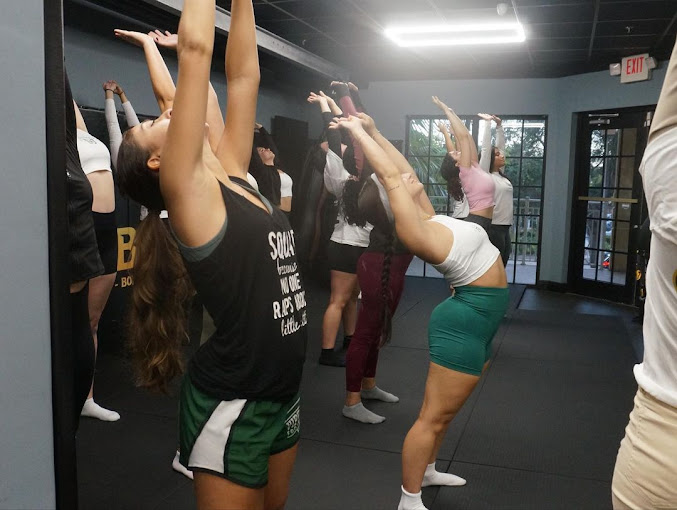Embarking on a Muay Thai journey is an exciting venture, but it’s natural to wonder about the financial commitment involved. How much do Muay Thai classes cost, and what factors influence the pricing? In this guide, we’ll break down the costs associated with Muay Thai training, empowering you to budget wisely as you step into the world of this dynamic martial art.
Understanding Muay Thai Class Costs
1. Gym Location: Urban vs. Suburban Rates
One of the primary factors influencing Muay Thai class costs is the location of the gym. Urban gyms, often situated in metropolitan areas, tend to have higher overhead costs, which can reflect in the pricing of classes.
On the other hand, suburban gyms may offer more affordable rates due to lower operating expenses.
2. Gym Reputation and Facilities
The reputation of a Muay Thai gym and the quality of its facilities play a significant role in determining pricing. Established gyms with experienced trainers, state-of-the-art equipment, and a track record of producing successful fighters may charge higher fees. Consider your priorities—whether it’s a renowned gym with topnotch facilities or a more budget-friendly option that still provides quality instruction.
3. Instructor Expertise and Credentials
Muay Thai instructors with extensive experience and recognized credentials often command higher fees. The expertise and reputation of the instructor can significantly impact the overall cost of classes. Investing in quality instruction is crucial for skill development, so consider the instructor’s background and teaching style when evaluating costs.
4. Class Frequency and Duration
Muay Thai classes may vary in terms of frequency and duration. Some gyms offer unlimited monthly packages, while others operate on a per-class basis. Additionally, the length of each class session can influence pricing. Assess your training goals and schedule to determine the most cost-effective option for your needs.
5. Membership Packages and Discounts
Many Muay Thai gyms offer membership packages with varying levels of commitment, such as monthly, quarterly, or annual memberships. Choosing a longer-term commitment often comes with cost savings. Additionally, inquire about any available discounts, such as student, military, or family discounts, to further optimize your budget.
6. Equipment and Attire Costs
While not directly related to class fees, it’s essential to consider additional costs such as required equipment and attire. Some gyms provide basic gear, while others may require you to purchase your own gloves, shin guards, and other protective gear. Factor these costs into your overall budget to ensure a comprehensive understanding of your Muay Thai investment.
Average Costs Across Different Settings
Urban Muay Thai Gyms: $100 – $200 per Month
In metropolitan areas, where operating costs are higher, monthly fees for Muay Thai classes typically range from $100 to $200. This range may include unlimited classes, allowing you to train as frequently as you desire.
Suburban Muay Thai Gyms: $80 – $150 per Month
Suburban gyms often offer a more budget-friendly alternative, with monthly fees ranging from $80 to $150.
While the costs may be lower, many suburban gyms maintain high-quality instruction and facilities.
Specialized Muay Thai Studios: $150 – $250 per Month
Specialized Muay Thai studios, known for their focused training and experienced instructors, may charge higher fees. Monthly costs in these settings typically range from $150 to $250.
Per-Class Rates: $15 – $30 per Session
For those preferring flexibility in their training schedule, per-class rates are an option. Prices can range from $15 to $30 per session, allowing you to pay only for the classes you attend.
Tips for Budget-Friendly Muay Thai Training
1. Research and Compare Gyms
Take the time to research different Muay Thai gyms in your area. Compare their offerings, class structures, and pricing to find a gym that aligns with both your budget and training goals.
2. Inquire About Trial Classes
Many gyms offer trial classes or discounted introductory packages. Take advantage of these opportunities to experience the training environment and instruction before committing to a long-term membership.
3. Explore Membership Discounts
Ask about membership discounts and promotions. Gyms often provide discounts for upfront payments, longer term commitments, or specific demographics, such as students or military personnel.
4. Consider Class Packages
If you’re unsure about committing to a monthly membership, inquire about class packages that allow you to purchase a set number of classes at a discounted rate. This approach provides flexibility while still offering cost savings.
5. Factor in Hidden Costs
Account for additional costs such as required equipment, attire, and any potential testing or grading fees. A comprehensive budget ensures you’re prepared for all aspects of your Muay Thai journey.
Conclusion: Investing in Your Muay Thai Journey
While the cost of Muay Thai classes varies based on factors such as location, gym reputation, and instructor expertise, the investment in your martial arts journey extends beyond financial considerations. Muay Thai offers not only physical fitness but also mental resilience, discipline, and a sense of community.
By understanding the factors influencing Muay Thai class costs and implementing budget-friendly strategies, you can embark on this transformative journey without breaking the bank. Whether you choose an urban gym, a suburban setting, or a specialized studio, the benefits of Muay Thai training are invaluable, contributing to your overall well-being and personal growth.
Remember, the cost of Muay Thai classes is an investment in yourself—an investment that pays dividends in physical health, mental fortitude, and the acquisition of skills that extend far beyond the training mat. As you weigh the financial aspects, keep in mind the profound rewards that come with embracing the art of Muay Thai and the vibrant community that accompanies it.

